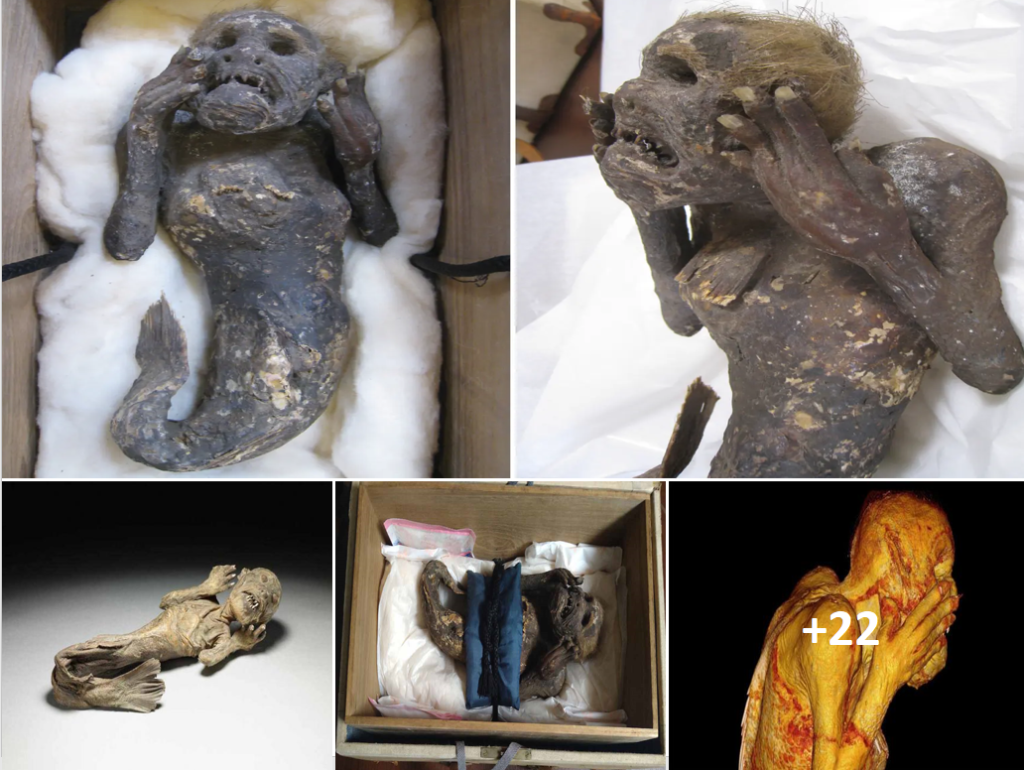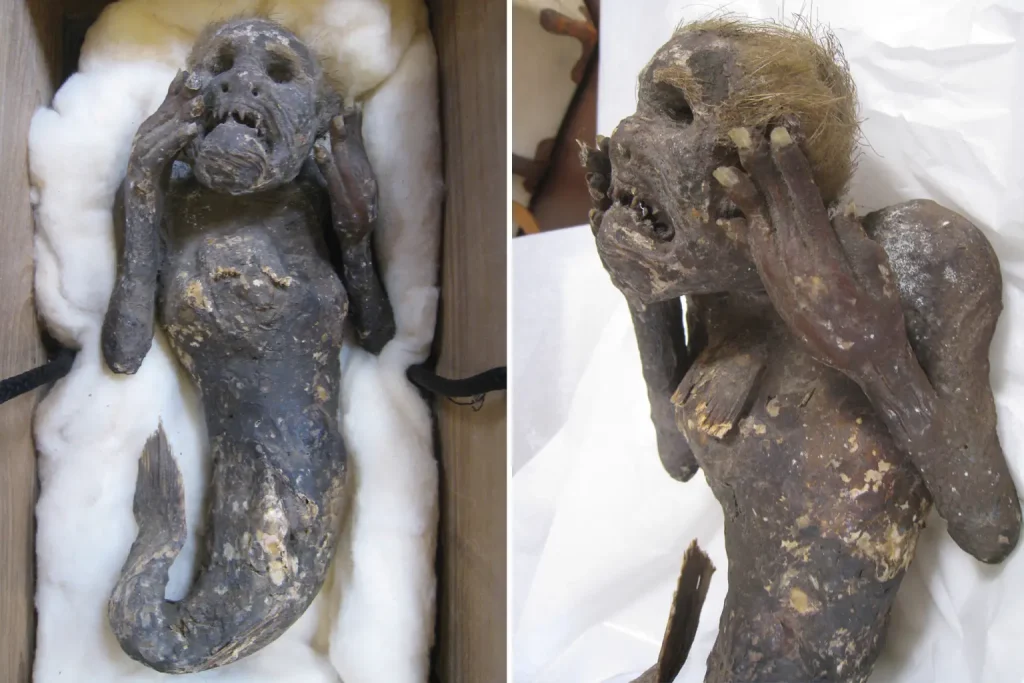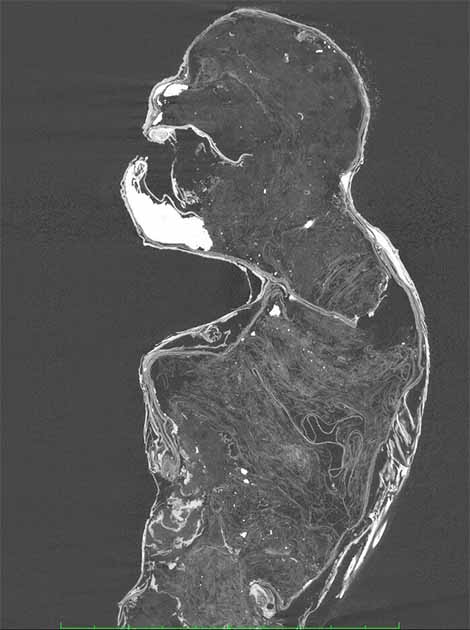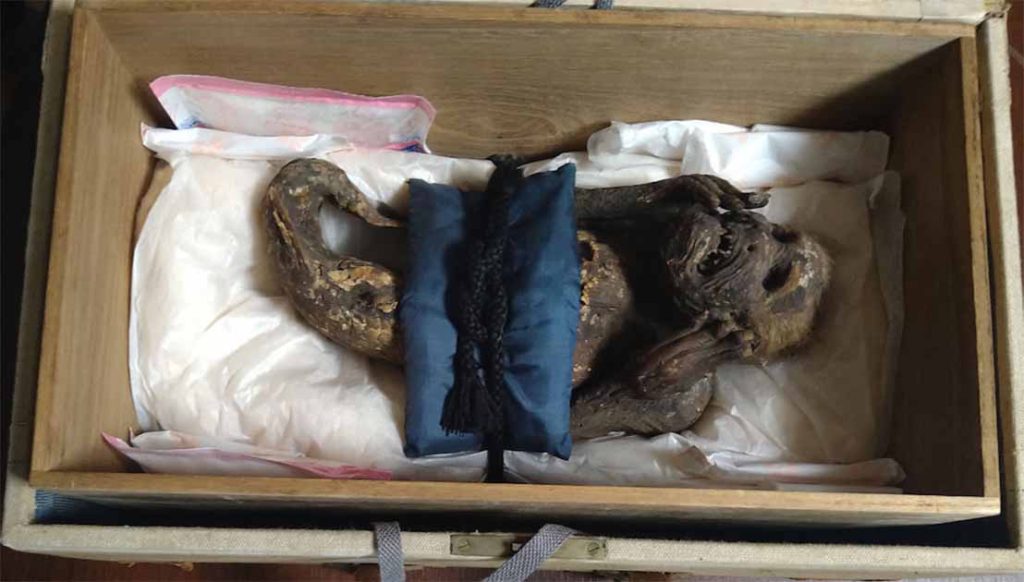
The Enjuin temple located in the city of Asakuchi, Japan is home to a well-known curiosity that draws tourists from all corners of the globe. It is a mummified creature measuring over 30 cm in length, with a contorted expression, sharp teeth, human-like hands, and hair on its head and eyebrows. The lower portion of its body is reminiscent of a fish, which has earned it the moniker “mermaid”.

For centuries, the existence of the “mermaid” has puzzled and intrigued the scientific community. This legendary creature was reportedly caught in the Pacific Ocean near the island of Shikoku between 1736 and 1741, and according to local lore, consuming its flesh would grant immortality. The mummified remains of this creature have been revered as a deity and worshipped by people for over 300 years. Recently, Kurashiki University of Arts and Sciences conducted a CT scan on the divine “mermaid” in an attempt to unravel its origins and unearth any clues about its true nature.

Takafumi Kato, a biologist at the University of Tokyo who worked on the project, announced that based on their analysis and the history of mummy creation in Japan, they can only conclude that the “mermaid” mummy is likely man-made. In other words, the mummy, which has been revered as a divine entity for centuries, is actually a doll with entirely artificial fish parts. X-rays conducted by the university revealed that the mummy lacks a spine, ribs, or any other bones. However, parts of its body are made from fish, such as its jaws and teeth, and its arms, shoulders, neck, and cheeks are covered in fish skin. Additionally, the lower part of the body contains fish bones. Radiocarbon dating conducted in the late 1800s confirms the age of the mummy.

Numerous other mummified “mermaids” have been discovered throughout Japan and are believed to have been crafted during the country’s Edo period, which spanned from 1603 to 1868. This era was marked by outbreaks of diseases such as smallpox and measles, and it is believed that the creatures were created as a means of providing good luck. According to Hiroshi Kinoshita of the Okayama Folklore Association, Japanese folklore is rife with tales of immortal mermaids, and it is said that consuming their flesh can bestow immortality upon the consumer.







